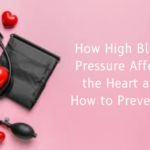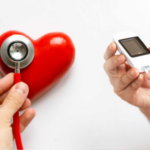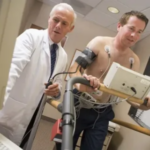
Heart attacks, also known as myocardial infarctions, are often associated with intense chest pain, shortness of breath, and other dramatic symptoms. However, there’s another type of heart attack that occurs silently, without the typical warning signs. Known as a silent heart attack, this condition can be just as dangerous as a traditional heart attack, if not more so, due to the lack of immediate recognition and treatment. In this article, we’ll delve into what silent heart attacks are, their risk factors, and how you can reduce your chances of experiencing one.
What is a Silent Heart Attack?
A silent heart attack, medically termed silent ischemia, occurs when blood flow to a part of the heart is blocked for a period of time, causing damage to the heart muscle without causing noticeable symptoms. Unlike traditional heart attacks, where symptoms like chest pain, shortness of breath, and nausea are typically present, silent heart attacks can go unnoticed or be mistaken for less serious conditions.
Silent heart attacks are particularly dangerous because without prompt medical attention, the damage to the heart muscle can lead to complications such as heart failure, arrhythmias, and even sudden cardiac arrest. Moreover, because individuals may not realize they’ve had a heart attack, they may continue with their usual activities, further increasing their risk of future cardiac events.
Risk Factors for Silent Heart Attacks
Several risk factors increase the likelihood of experiencing a silent heart attack. These risk factors can be categorized into modifiable and non-modifiable factors.
Non-Modifiable Risk Factors:
- Age: The risk of heart disease, including silent heart attacks, increases with age. Individuals over the age of 65 are at higher risk.
- Gender: Men are more likely to experience silent heart attacks than women, although women can also be affected.
- Family History: A family history of heart disease or heart attacks increases the risk of silent heart attacks.
- Previous Heart Attack: Individuals who have previously had a heart attack are at higher risk of experiencing another, including silent heart attacks.
Modifiable Risk Factors:
- High Blood Pressure: Hypertension puts strain on the heart and increases the risk of heart attacks.
- High Cholesterol: Elevated levels of cholesterol in the blood can lead to the buildup of plaque in the arteries, restricting blood flow to the heart.
- Diabetes: Diabetes increases the risk of heart disease and silent heart attacks due to its effects on blood sugar levels and blood vessel health.
- Obesity: Being overweight or obese puts additional strain on the heart and increases the risk of heart disease.
- Smoking: Tobacco use damages blood vessels and increases the risk of atherosclerosis, making smokers more susceptible to heart attacks.
- Sedentary Lifestyle: Lack of physical activity is associated with various cardiovascular risk factors, including obesity, high blood pressure, and high cholesterol.
- Poor Diet: A diet high in saturated fats, trans fats, salt, and sugar increases the risk of heart disease.
Prevention and Management
Preventing silent heart attacks involves addressing modifiable risk factors and making lifestyle changes to promote heart health. Here are some strategies for prevention:
- Regular Exercise: Aim for at least 150 minutes of moderate-intensity aerobic exercise or 75 minutes of vigorous-intensity exercise each week.
- Healthy Diet: Eat a balanced diet rich in fruits, vegetables, whole grains, lean proteins, and healthy fats.
- Maintain a Healthy Weight: Aim for a body mass index (BMI) within the healthy range (18.5–24.9).
- Quit Smoking: Seek support and resources to quit smoking, and avoid exposure to secondhand smoke.
- Manage Stress: Practice stress-reduction techniques such as mindfulness, meditation, deep breathing, and yoga.
- Monitor Blood Pressure and Cholesterol: Get regular check-ups and follow medical advice to manage hypertension and high cholesterol.
- Control Blood Sugar: If you have diabetes, work with your healthcare provider to keep your blood sugar levels within the target range.
Additionally, it’s crucial to be aware of the signs and symptoms of heart attacks, even silent ones. If you experience any unusual symptoms such as chest discomfort, shortness of breath, nausea, fatigue, or dizziness, seek medical attention promptly.
Summary
Cardium Advanced Heart Care Hospital are instrumental in providing comprehensive care for individuals at risk of silent heart attacks. With state-of-the-art facilities, experienced cardiovascular specialists, and a commitment to personalized medicine, Cardium Hospital is dedicated to detecting, preventing, and treating silent heart attacks, ensuring the best possible outcomes for patients. By integrating genetic testing, advanced diagnostic techniques, and evidence-based interventions, Cardium Hospital strives to reduce the burden of silent heart attacks and promote heart health in the community.
Silent heart attacks pose a significant risk to individuals, as they can occur without warning and go unnoticed. Understanding the risk factors for silent heart attacks and taking steps to prevent them is essential for maintaining heart health and reducing the likelihood of experiencing a cardiac event. By adopting a healthy lifestyle, managing risk factors, and seeking medical attention when needed, you can lower your risk of silent heart attacks and improve your overall cardiovascular health. Remember, prevention is key when it comes to protecting your heart.




